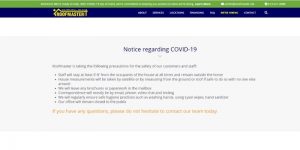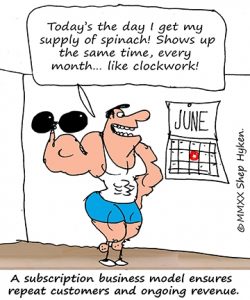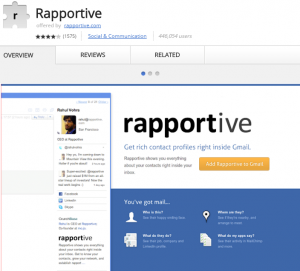
In my last article, Stop doing short-term campaigns, I said that cognitive effort was the “lever of relevance.” Several people have asked me what this means. Because it is fundamental to my work, I thought I would write a whole blog post about it.
First, a lever is something you use to do a lot of work without a lot of effort. The longer the lever, the heavier the weight than you can lift. In the case of information, the work involved requires cognitive effort. A weightier task forces the audience to expend more cognitive effort. For example, it takes more cognitive effort to explain quantum mechanics than simple physics. But there are ways to explain even quantum mechanics to those with no knowledge of physics. I call these levers because they make heavy topics easier to process.
I have written a book on this topic. So if you want to geek out on it, read the book Audience, Relevance, and Search. This post is just for those who don’t want to geek out on it but just want some practical advice on how to increase relevance for their audiences. In particular, I want to highlight five cognitive levers to increase relevance by decreasing the cognitive effort in your audiences. Before I do that, I want to make sure we are all talking about the same thing we use the term “relevance.”
What is relevance?
The cognitive effort required to understand something is relative to the audience. A PhD physicist could understand quantum mechanics a lot more easily than someone who has never studied physics. This is why the science of relevance is relativistic. What is relevant to someone is highly dependent on their education, experience, and interests. It works in two ways. Either someone is intensely interested in something or it is really easy for them to process it. In both cases, we say something is relevant to that person. Of course, these things are not mutually exclusive nor absolute. They exist on a continuum for each individual and topic. In rough terms:
Relevance = interest/effort
Someone who is intensely interested in a topic will geek out on it and and expend huge cognitive effort trying to understand it. Someone could be thoroughly immersed in a topic, so it is just really easy for them to understand it. But for most of us on the web, we’re somewhere in between. We don’t have the time or mental energy to geek out on many things. And we have to learn new things all the time. So we have to pick and choose. For most folks, interest increases relevance and effort decreases it, roughly proportionally.
We tend to geek out on things in social media, and will waste hours of our time debating with others on topics of intense interest. But for topics where we need to stretch ourselves, typically for work, we use search. This is why I emphasize keyword research to understand topics of interest to our audience. Keywords are the best clues to relevance.
Once you have the keywords, you already have a baseline of relevance. The only way to increase relevance for these audiences is to reduce effort. If you think about the search experience, searchers don’t know to what extent the results match their interests. So they use a lot of trial and error to find the result that will give them the best answers they need with the least amount of effort. Keyword research gets you in the game, cognitive levers help you win it.
Steven Krug‘s Don’t Make Me Think Revisited is the recommended manifesto on reducing user experience effort. But that just covers the design of the experience. Most of the cognitive levers that increase relevance are in the way the content is written and structured. Here I cover the five most effective content cognitive levers that I have used in my work.
Lever 1: Use the what, why, how framework
When users land on your digital experience, their first decision is whether the page is worth their attention. So they look for clues as to what the page is about. If you answer that question clearly—in the heading, subhead, and first few lines of text—it’s a foot in the door. The goal right up front is to show them that the page is worth their attention, to keep them from bouncing.
Once you have their attention, the question they need answered is why is this important? In the age of intense content competition, you need to show why your page is more important than the gazillion other pages on the same topic. The goal here is to show them that the page is worth their time.
Here relevant statistics that put the page in the context of the topic tend to work the best. I usually start this part with the phrase “This is important because…” followed by an impact statement. This is also the content you want to pull out into some sort of graphical treatment.
For example, I once wrote an article on DNA testing in which I interviewed leading criminologists. The shocking fact was that in a midsized city, a DNA match alone only gives you a 50% chance that you have the right suspect. The infographic that accompanied the article was about that fact. I started the why section with “This is important because a lot of suspects are falsely convicted on DNA evidence alone.”
Once you have their time and attention, the question they need answered is how? “How did they do it?” “How would I do it?” etc. This is where stories are very valuable, especially in B2B content marketing, where you are demonstrating that your product is not mere hype or vaporware. If you can show how it was successfully used by one of your clients, readers will read to the end and get what they need out of the page.
Lever 2: Use analogies
When you are showing why something is important, the tendency is to get into the weeds of the topic, which can turn off readers before you get them to the meat of the content, or the story. Here the best rhetorical device is to use an analogy. Show them that a super geeky issue is just like an everyday problem. Because they can relate to the problem, they can begin to relate to the geeky issue.
For example, I recently published a blog post for my executive sponsors—people who run large digital marketing organizations. I was trying to get the executives to devote some time and resources to a common problem: digital marketers struggle to read content analytics reports and apply the insights to their jobs. Because of this, they just do what they have always done rather than changing their behavior. Nobody was more frustrated by this situation than the executive sponsors I targeted with the post.
In the post, I used an analogy: “Trying to use analytics dashboards for content marketing is like trying to navigate at high speed with a cell phone. You can’t keep your eyes on the road and on the map at the same time.” This resonated with them because they had driven in that situation and could then relate with the challenges the marketers faced. I’m happy to say the key executives are now taking my advice on how to improve the “driving” conditions for their content marketers.
Lever 3: Break content up into small chunks
Once you have their time and attention, a good rule of reducing cognitive effort is to make your audience comfortable with the amount of information you are presenting. If you try to say too much in one experience, your audience will often run out of time or mental energy and leave to find another competing experience that is has a narrower scope. Or they might bookmark your experience and return, where they have to expend a lot of cognitive effort getting back to the point of the experience.
Let the keywords guide you: one keyword phrase per content experience to start with. You will still need portal pages. And you will need to build navigational taxonomies that link topic pages together. But if you find your topic pages are showing up in Google‘s index for a lot of keywords, that is a signal that you need to break them up into smaller chunks.
The nirvana is structured content. Since I have already written about that, I’ll let you follow the link if interested, rather than forcing you to spend more cognitive effort on it now.
Lever 4: String the chucks together into steps
The risk with presenting a lot of small, snackable content chunks is the cognitive effort it takes to string them together. You might read a dozen related tweets by someone, but if they’re not threaded, you have to do the work of stringing them together. In the context of Twitter, this greatly increases cognitive load because the related tweets are separated by other unrelated tweets for other people you follow.
This is called multitasking, and our brains hate it.
Obviously, the experiences you create are not like Twitter in the sense that you have control over the information flow. But if you are building one experience (page, asset, other) per major keyword, you will want to give your audience an easy way to move from related experience to related experience.
The good news is, you can use cognitive technologies to cluster the keywords together and build a graph database that connects them visually. This will help you build experiences where the steps tend to be more relevant to each other.
Lever 5: Give them a map
For your audience, the risk with structured content is getting lost in the forest because there are so many trees. Also, users sometimes want to take nonlinear paths through the step-by-step journeys you design for them. The easy way to help them do this is to give them a map at the top of every page that shows them where they are in a typical user journey. We use several design patterns for this, but, at minimum, you can use breadcrumbs.
Beyond design patterns, maps help information architects understand the relationships between topical areas so that they can present the steps in the easiest order. If you find users taking common nonlinear paths through your content, this is a signal to build a new map. With structured content, you can build multiple maps with the same content chunks. Start with the most obvious paths and add short cuts as users take them. Also, maps help them go back or return to a step to review or revisit.
There are many more cognitive levers. But most people I work with find these five to be quite enough to get started improving the relevance of their content for their target audiences.
Digital & Social Articles on Business 2 Community(36)






